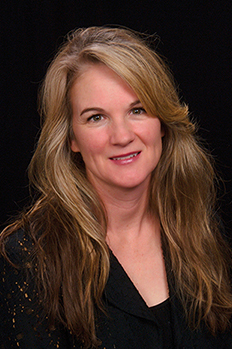Poetry: Not a Unit
The events in the book take place over the course of a whole school year to demonstrate that the reading, writing, sharing, and enjoyment of poetry should be a yearlong endeavor. Doing a “poetry unit” once a year just doesn’t yield the same results.
So, here’s the challenge: Ditch the unit! Engage in modeled, shared, interactive, and independent poetry writing throughout the year and across the curriculum. Try different types of poems, but include a lot of free verse. This allows students to feel free to invent.
If you keep up with writing poetry across the curriculum as the year progresses, students will delight in writing more and more of their own. The poems can even be bound into class books and reread.
Learning Through Poetry
Synthesizing learning through poetry is one of my favorite experiences to share with children. Students can start by writing the name of their topic (ex: “Seasons”) and launch the thinking using a simple verb phrase (make us …). This can lead to a list of phrases that go along with the verb, thus reviewing what’s been learned and, perhaps, leading to larger insights.
Here are some simple verb phrases students can use to create poems about their learning:
makes us (me) ...
helps us (me) …
reminds us (me) …
leaves us (me) …
tells us (me) …
Invite students to write a poem of their own on the topic after working as a class or group. I find kids are often inspired to do so after having a shared experience.
Another way students can write poems on subjects they’re studying is to work in teams to come up with two or three key words about the topic. These must be the “most important words.” Share their words with the class and pick five or six. Then, consider each individual word carefully and work up a phrase around it that pinpoints its meaning. Again, this is very simple, but can lead to some amazing poetry. And, all along, we’re reviewing content!
Poetry on a Napkin
One way to hook students on poetry is by modeling writing poetry that comes to mind outside of class on anything—other than paper. For instance, on a napkin.
I bring the napkin to class to share, saying something like, “Last night, I was eating at a restaurant, and an interesting idea hit me. So, of course, I wrote it down so I wouldn’t forget it. All I had was this napkin, and while I was waiting for my food, I played with some words and ideas and look … I wrote a poem right here!” I read my poem aloud, and what happens the very next day? Yep! Students start bringing in little poems written on all kinds of materials.
I always allow time for them to share—either with the class or a small group—since sharing is so motivating and serves to, once again, keep poetry on students’ minds.
Reflecting on Poetry-Writing Growth
If your students write poetry throughout the year, keeping a few samples for them to reflect on can be really instructive. When they see the difference between their first poem and their last, they’ll feel like Stella: “pretty confident writing poetry now … like poet extraordinaires!”
Let students talk about the growth they see and how they feel about writing poetry now versus at the beginning of the year. The conversations students have will help cement their identities as poets—something you’ll hope they keep nourishing throughout their lives.
Writing Poetry With Our Most Emergent Writers
Can little ones write poems? Of course they can! A simple form of poetry I often include at the beginning of the year is a list poem. Children bring in something special from home to write about (ex: a toy, a bracelet, or a stuffed animal). After sharing with the class, they closely study their object and make a list of words that come to mind (color, shape, texture, etc.). I model this process first, using the special something I’ve brought from home.
Children will represent their thoughts in their various emerging ways on paper. (You could also have them “talk out” their poems while recording them.) They can illustrate their work, if desired. Be sure to let them share! List poems are a simple start to a wealth of opportunities for modeled, shared, interactive, and more independent poetry writing.
I often write down what children say on a sticky note, then type their language in a poetic format. They love seeing their work in this polished form! Having them read and reread their poems is a meaningful way to build reading skills, as well!

